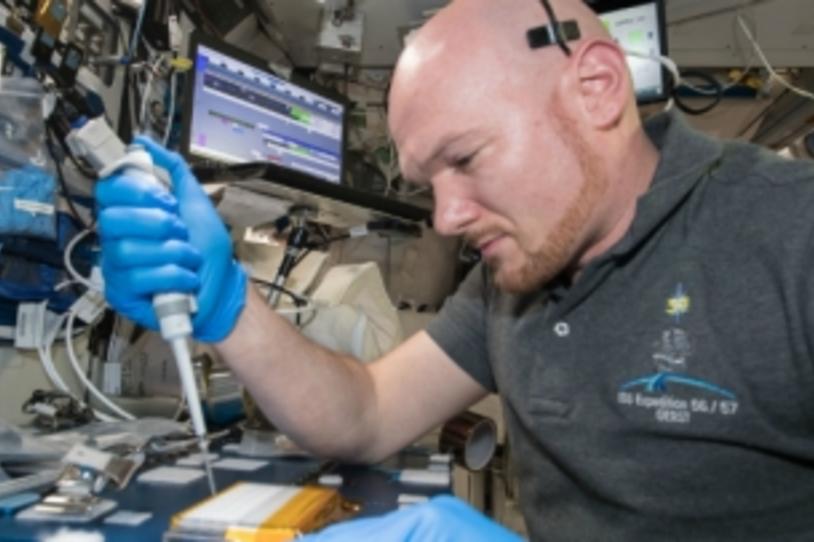
ISS Commander Alex Gerst. Photo courtesy of NASA.
This weekend, the results of an experiment sponsored by The Michael J. Fox Foundation will return to Earth aboard a SpaceX Dragon rocket. Astronauts conducted the study aboard the International Space Station (ISS). While the work in space is extraordinary, it represents one part of a much larger journey.
Sebastian Mathea, PhD, of Goethe University Frankfurt is one of the scientists who designed the experiment. His goal is to grow high-resolution crystals of LRRK2, a protein kinase involved in Parkinson's disease.
MJFF: Why are you trying to grow LRRK2 crystals?
Sebastian Mathea: If you can grow high-quality crystals, you can then calculate the 3-D structure of the protein. Once you have that, other scientists can use it to do structure-based drug discovery. Right now, LRRK2 inhibitor drugs might hit other kinases as well. They may work, but adverse effects are likely. One of my colleagues in the kinase community modified the Tolstoy quote from Anna Karenina: "Happy families are all alike; every unhappy family is unhappy in its own way." They said: "Active kinases are all alike; every inhibited kinase is inhibited in its own way." With the 3-D structure, we'd like to understand the specific way to inhibit LRRK2. This could reduce side effects and anything else you don't intend a drug to do.
MJFF: How do you grow them?
SM: I have grown a lot of protein crystals in my career. The process is pretty much trial and error, with many parameters to modify. You're testing hundreds of solutions to find the right one to grow that particular protein crystal. They can take a day or a month to grow. LRRK2 protein is large and complex, which makes it harder to grow. We've tried hundreds of thousands of times over the last six years.
MJFF: Why try it in space?
SM: Well, I had to either accept that we cannot grow this or go to space. I thought "If I break it, I break it. If I make it, I make it." In Earth's orbit, you have zero gravity. And without the force of gravity, proteins can grow bigger. Our collaborator Paul Reichert, who has grown other proteins in space, said, "Each time I've sent an experiment to space, I've improved the crystals in some way."
MJFF: You tried an experiment aboard the ISS once before. What's different this time?
SM: We did send up an experiment last year. Crystals grew but they weren't big enough. We published our results and asked other scientists for suggestions to improve. And the Center for the Advancement of Science in Space (CASIS) helped us. They manage the U.S. National Laboratory on the Space Station. Last time, we put the experiment in two bags and just sent it up. It was all pre-packaged. This time, ISS Commander Alex Gerst conducted the experiment. We were able to watch him pipette in real time, along with CASIS staff here on Earth. He did a test run, too. So we could answer questions and address concerns before he tried it the final time.
MJFF: What's next for LRRK2?
SM: The samples are scheduled to return to Earth this week. We will retrieve them and see what we have. We could have no crystals, some crystals that are too small, or amazing big crystals. In each case, we will examine the samples and try to learn more. Other investigators on this experiment, Susan Taylor and Andres Leschziner, are also studying the structure of LRRK2 in their labs at UCSD with cryo-electron microscopy. The Fox Foundation is letting us try everything.